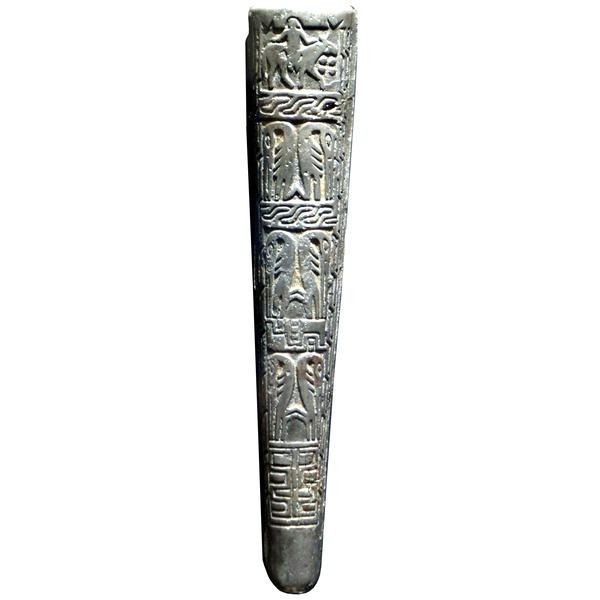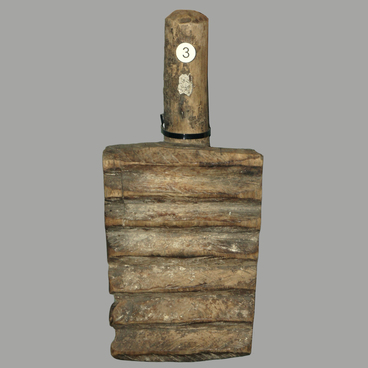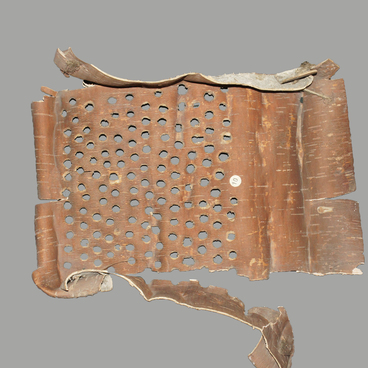It was found in Novokuznetsk at the edge of the right shore terrace of the Tom river of 54 m over the water level, across from the mouth of the river Aba (Verkhnaya Ostrovskaya district). Archaeologists investigated an area of about 600 square meters with 14 tombs of the Fominskoye culture discovered, as well as evidence of memorial rituals. A number of graves were gone as a result of previous activities. The area of the site was blocked with a waste dump from a nearby clay pit with a capacity of 0.5 to 1.5 m. The surviving part of the burial ground has been discovered and fully excavated.
The Ust'-Abinsk burial ground is the jewel in the crown of the archeological heritage of Kuznetsk land. The accessories in the burial ground is represented by artful products made of white bronze, reflecting the religious beliefs of the people of that era, namely — the cult of the bear and the cult of Mithra (images of riders and waterfowl). Also, gold objects were found in the burial ground — gold foil, patches and earrings. It should be noted that all the above items, most likely, got to the territory of Kuznetsk Land from the western piedmont of the Ural Mountains in the process of barter trade.
The time the heritage asset appeared is assessed as the second quarter of the first millennium A.D., which is the finale of the Hunnish-Sarmatian era. For many steppe and wooded steppe regions of Eurasia it was a time of troubles. Collapse of ancient cultures, desolation of lands, abrupt change of cultural traditions – all this can be described with the capacious term of ‘the era of the great migration of peoples’. Although this term was introduced to designate a special period in the history of Europe, it also corresponds to the characteristics of ethno-cultural cataclysms of the first half of the first millennium on the most remote eastern margins of the Eurasian steppe area.
The bronze sheath casing onlays are long cast, longitudinally arched plates with one end (the narrower one) rounded. On the edges of the plate, in the upper and middle part, there are fastening loops, the rounded end of the plate is tightened with a flat jumper. The whole decorative composition on the onlay cases is vertical. The upper, and the widest part of the onlay case is usually taken by the image of a rider. The axial division of the composition below the level of the rider, with the heraldic arrangement of pairs of birds, is probably based on the idea of a world tree - one of the most important worldview images of many peoples. In total, 11 pieces of cast bronze sheath onlay cases were found in the burial grounds of the Fominskoye culture: with two levels of birds and a rider, three levels of birds and a rider, three levels of birds and a three-tailed deer, two levels of birds and a rider on a ‘winged’ horse.



